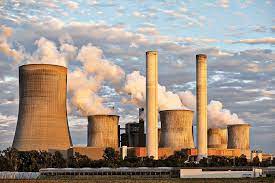
In the realm of industrial infrastructure, cooling towers stand as iconic structures, silently working to dissipate vast amounts of heat generated by various processes. These towering giants play a crucial role in maintaining the optimal operating conditions of power قیمت برج خنک کننده, manufacturing facilities, and other industrial complexes. From their imposing exteriors to the intricate mechanisms hidden within, cooling towers are engineering marvels that exemplify human ingenuity in managing thermal energy.
Understanding Cooling Towers
At their core, cooling towers serve a fundamental purpose: to remove excess heat from a system by transferring it to the atmosphere. They accomplish this through the process of evaporation, a principle as old as nature itself. The basic design of a cooling tower typically involves a large structure, often cylindrical or rectangular in shape, with a network of fill media inside.
Water, heated by industrial processes such as power generation or manufacturing, is pumped into the cooling tower and distributed over the fill media. As this water cascades down the fill surfaces, it comes into contact with ambient air flowing upward through the tower. Through evaporation, heat from the water is transferred to the air, causing a portion of the water to vaporize and carry away the thermal energy.
Types of Cooling Towers
Cooling towers come in various configurations, each tailored to specific requirements and environmental conditions. The most common types include:
- Natural Draft Cooling Towers: These colossal structures rely on the principle of natural convection for airflow. With their towering height and expansive design, they harness the temperature differential between the warmer internal air and cooler external air to induce airflow. Natural draft cooling towers are often seen in large power plants and industrial complexes.
- Mechanical Draft Cooling Towers: Unlike natural draft towers, mechanical draft towers employ fans or blowers to force air through the tower. This method allows for greater control over airflow rates and can be more compact in size. Mechanical draft towers are prevalent in commercial buildings, data centers, and smaller industrial applications.
- Hybrid Cooling Towers: Combining elements of both natural and mechanical draft designs, hybrid cooling towers offer flexibility and efficiency. By utilizing natural convection alongside mechanical assistance, these towers optimize energy usage while adapting to varying load conditions.
Applications and Importance
The significance of cooling towers extends across diverse sectors, underpinning critical industrial processes and infrastructure. They are integral components of:
- Power Generation: In thermal power plants, cooling towers help dissipate heat from steam turbine condensers, enabling efficient electricity generation.
- Manufacturing: Industries such as petrochemicals, steel production, and food processing rely on cooling towers to regulate temperatures in equipment and processes, ensuring product quality and safety.
- HVAC Systems: Commercial buildings utilize cooling towers as part of HVAC (heating, ventilation, and air conditioning) systems to maintain comfortable indoor temperatures.
Challenges and Innovations
While cooling towers offer efficient heat dissipation, they also present challenges such as water usage, environmental impact, and maintenance requirements. However, ongoing advancements in technology continue to address these issues:
- Water Conservation: Innovations in water treatment and recycling systems aim to minimize water consumption and mitigate environmental impact.
- Energy Efficiency: Enhanced designs, variable-speed fans, and intelligent control systems optimize energy usage, reducing operational costs and carbon footprint.
- Material Science: Research into advanced materials improves tower durability, corrosion resistance, and thermal efficiency, extending their lifespan and reliability.
Conclusion
Cooling towers stand as towering sentinels of thermal management, silently expelling heat to maintain the equilibrium of industrial processes. From the colossal natural draft structures to the sleek mechanical draft installations, these engineering marvels epitomize the fusion of innovation and necessity. As industries evolve and environmental concerns deepen, the continued refinement of cooling tower technology underscores our commitment to sustainable progress and efficient resource utilization. In the ever-advancing landscape of industrial infrastructure, cooling towers remain indispensable guardians of temperature regulation, ensuring the smooth operation of the systems that power our modern world.